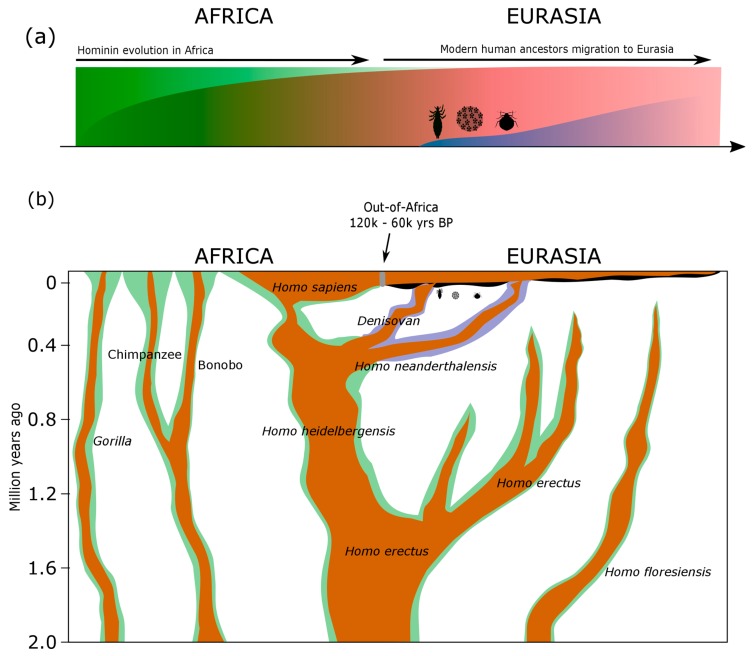Figure 2.
Human pathogen origin and transmission scenario between modern human ancestors, other hominin groups, and the African great apes. (a) Schematic diagram as a function of time (x-axis) of the human pathogen presence originating from Africa (e.g., human papillomavirus (HPV), herpes simplex virus (HSV), and human immunodeficiency virus (HIV) [29,30,33] depicted in green) and evolving among modern humans migrating out-of-Africa (red color), with additional transmission between modern humans and other hominins in Eurasia (e.g., HPV [1], HSV [42], lice [44], and bed bugs depicted as three icons and subsequent prevalence in blue color). Hence, we highlight that, following the out-of-Africa migration of modern humans, sexual transmission from Neanderthals or other hominin groups likely introduced certain HPV, HSV, and ectoparasitic pathogens to modern humans, many of which are still prevalent today. (b) The majority of modern human pathogens emerged in Africa (illustrated as green shades along the corresponding Hominin and great ape evolutionary tree [29,30,33]), where they were transmitted between ancestral hominin groups and the African great apes, and further codiverged and dispersed outside Africa with the corresponding ancestral hominin groups: evolution of Neanderthal and Denisovan populations exclusively in Eurasia with their corresponding pathogens (illustrated in blue color and with three icons ca. 800–400 kya [48,49,50,51]), also leading to host-switch events with modern human ancestors after modern human out-of-Africa migration and admixture, ca. 120–60 kya [48,49]. Pathogens associated with modern humans outside Africa are illustrated in blackshades along the corresponding modern human dispersals. Hominin evolution with wavy branch edges indicating presumed population fluctuations in time was modified from [52].

